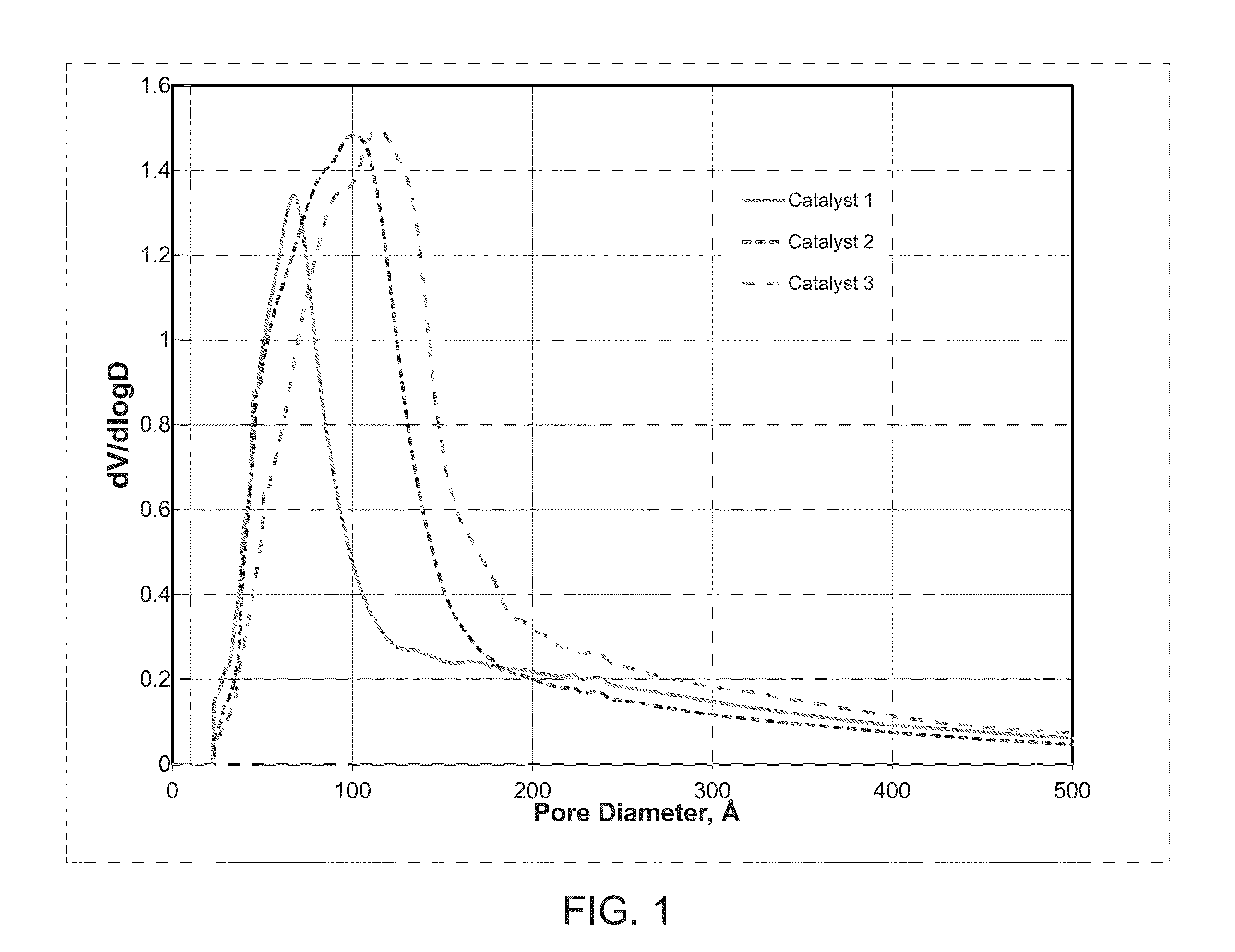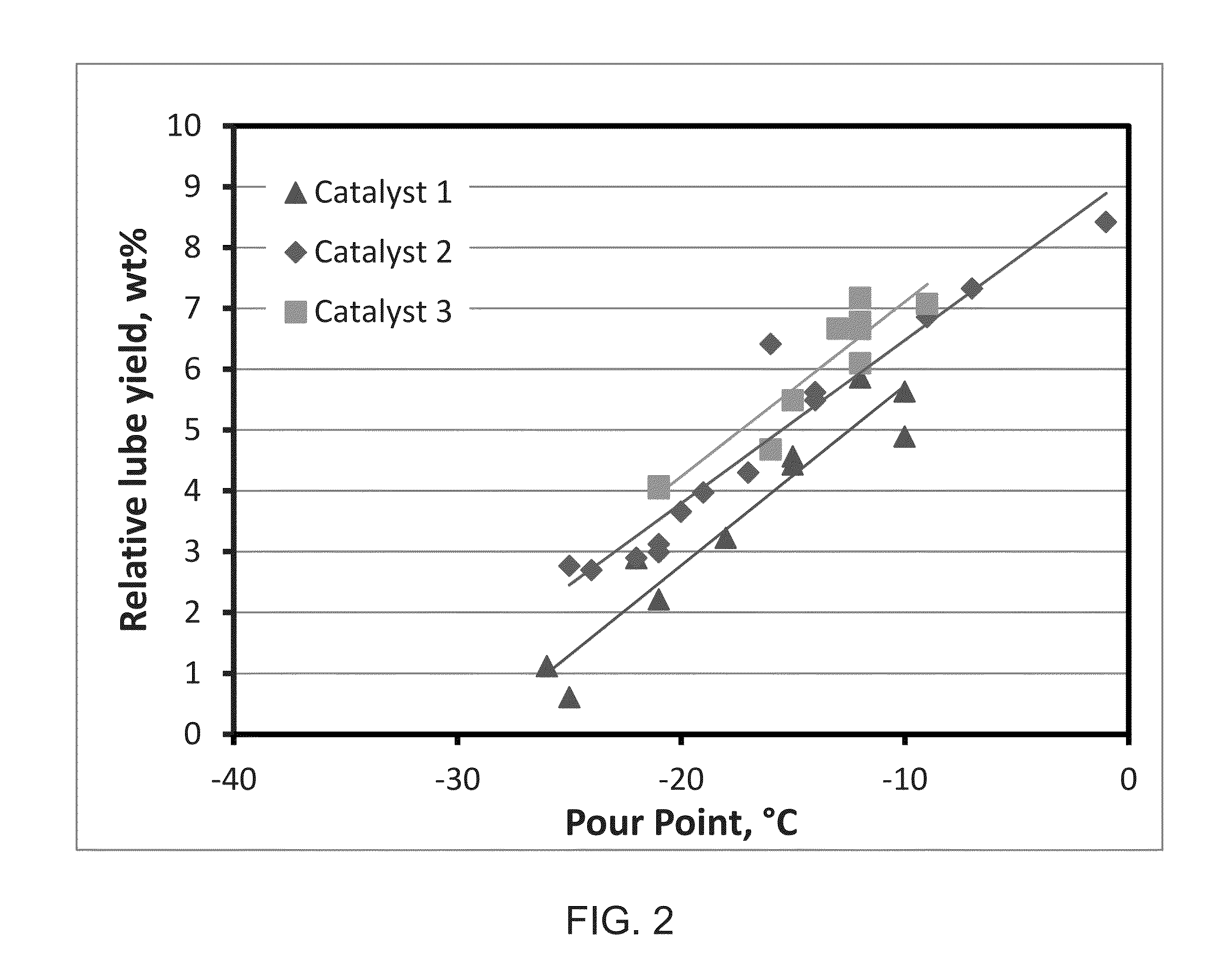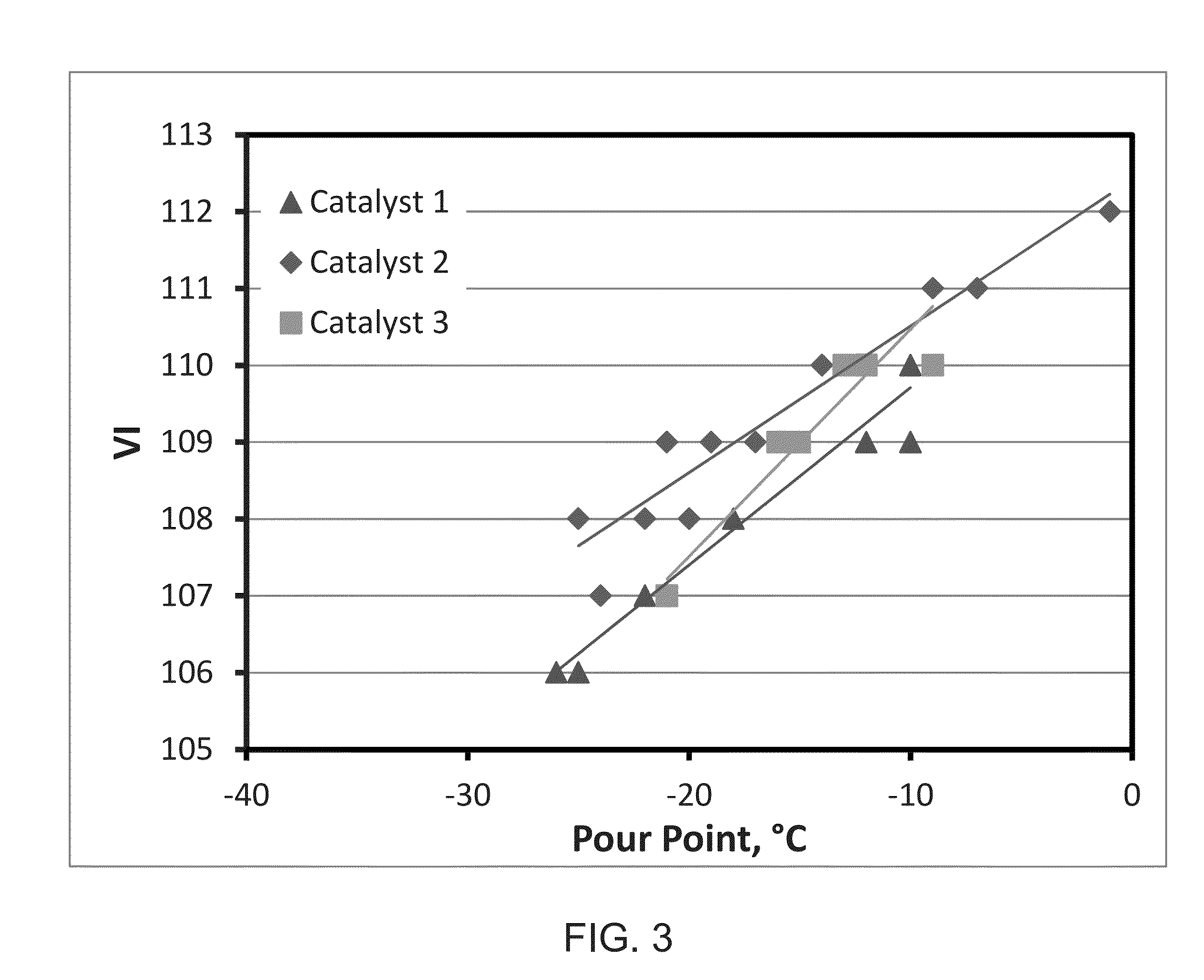Hydroisomerization catalyst manufactured using a high nanopore volume alumina supports
a technology of alumina supports and hydroisomerization catalysts, which is applied in the direction of catalytic naphtha reforming, physical/chemical process catalysts, lubricant compositions, etc., can solve the problems of fuel formation, negative impact of pour and cloud points of fractions, and dewaxing also lowering the viscosity index (vi) of base oil fractions, so as to improve hydrogen efficiency and product yield and quality. , the effect of improving th
- Summary
- Abstract
- Description
- Claims
- Application Information
AI Technical Summary
Benefits of technology
Problems solved by technology
Method used
Image
Examples
example 1
Preparation of Catalysts 1, 2 and 3
[0069]Conventional catalyst 1 was prepared using 55 wt. % pseudo-boehmite alumina according to the method disclosed in U.S. Pat. No. 8,790,507 B2 to Krishna et al., granted on Jul. 29, 2014. The dried and calcined extrudate was impregnated with a solution containing platinum. The overall platinum loading was 0.325 wt. %.
[0070]Catalyst 2 was prepared as described for conventional catalyst 1 by partially replacing the conventional alumina with a 37.5 wt. % HNPV alumina powder having a broad pore size distribution (BPSD). The properties of the BPSD HNPV alumina are described in Table 5 below.
[0071]Catalyst 3 was prepared as described for conventional catalyst 1 except that conventional alumina was not used, and instead 20 wt. % of a HNPV alumina having a narrow pore size distribution (NPSD) and 35 wt. % of a HNPV alumina having a BPSD were used as the binding material. The properties of the NPSD HNPV alumina are described in Table 5 below.
[0072]The co...
example 2
Hydroisomerization Performance
[0077]Catalysts 1, 2 and 3 were used to hydroisomerize a light neutral vacuum gas oil (VGO) hydrocrackate feedstock having the properties outlined in Table 9 below.
TABLE 9FeedstockPropertiesgravity, °API34S, wt %6viscosity index at 100° C. (cSt)3.92viscosity index at 70° C. (cSt)7.31wax, wt %12.9DWO VI101DWO Vis@100 C., cSt4.08DWO Vis@40 C., cSt20.1Distillation Temperature (wt %), ° F. (° C.) 0.5536 (280) 5639 (337)10674 (357)30735 (391)50769 (409)70801 (427)90849 (454)95871 (466)99.5910 (488)
[0078]The reaction was performed in a micro unit equipped with two fix bed reactor. The run was operated under 2100 psig total pressure. Prior to the introduction of feed, the catalysts were activated by a standard reduction procedure. The feed was passed through the hydroisomerization reactor at a liquid hour space velocity (LHSV) of 2, and then was hydrofinished in the 2nd reactor as described in U.S. Pat. No. 8,790,507B2, which was loaded with a Pd / Pt catalyst t...
PUM
| Property | Measurement | Unit |
|---|---|---|
| pore size | aaaaa | aaaaa |
| pore size | aaaaa | aaaaa |
| pore size distribution | aaaaa | aaaaa |
Abstract
Description
Claims
Application Information
 Login to View More
Login to View More - R&D
- Intellectual Property
- Life Sciences
- Materials
- Tech Scout
- Unparalleled Data Quality
- Higher Quality Content
- 60% Fewer Hallucinations
Browse by: Latest US Patents, China's latest patents, Technical Efficacy Thesaurus, Application Domain, Technology Topic, Popular Technical Reports.
© 2025 PatSnap. All rights reserved.Legal|Privacy policy|Modern Slavery Act Transparency Statement|Sitemap|About US| Contact US: help@patsnap.com



